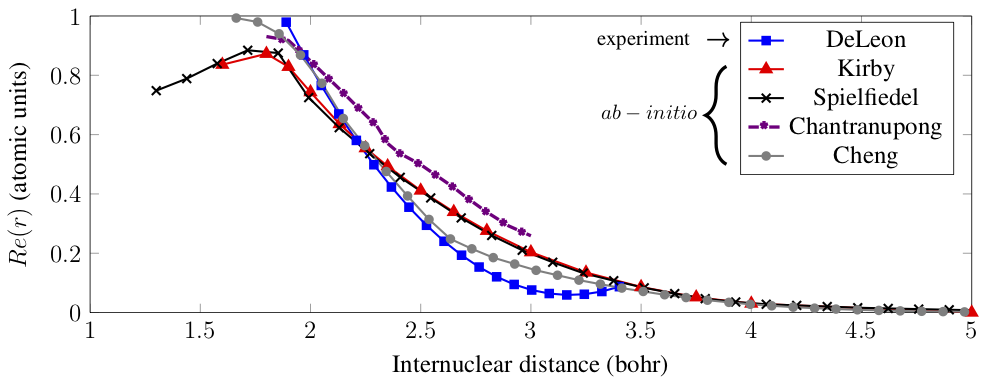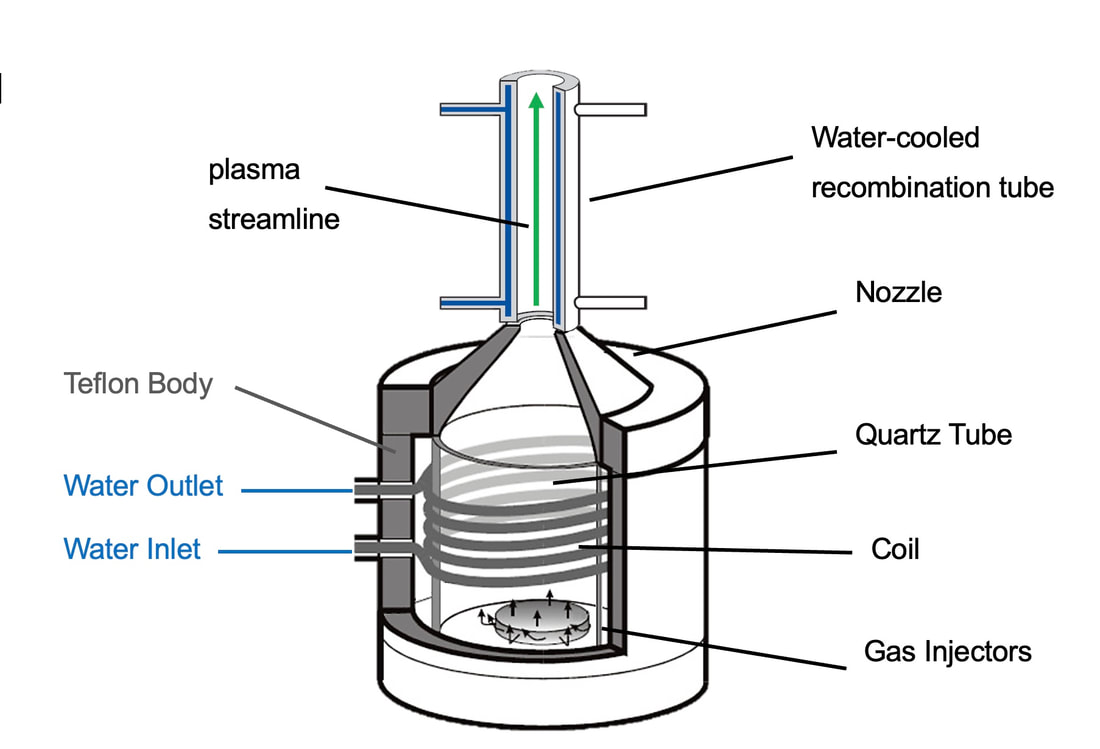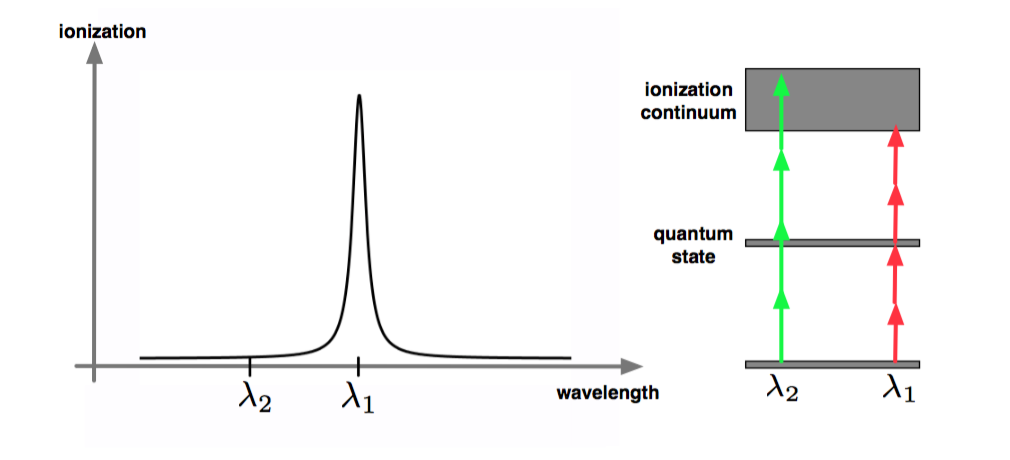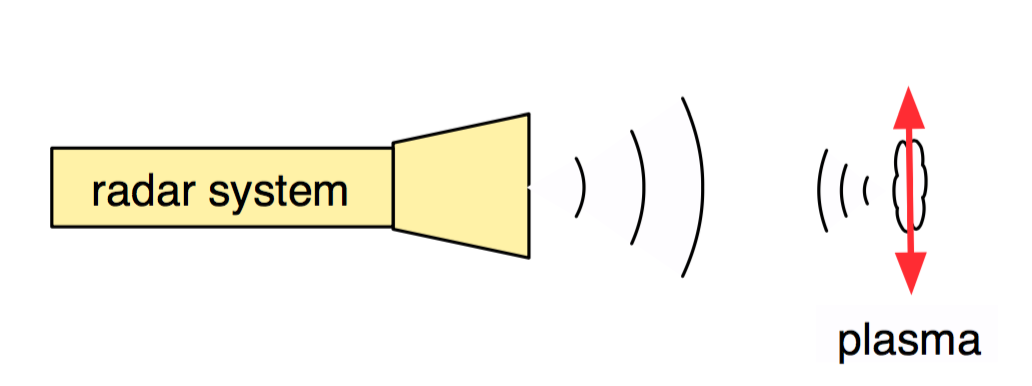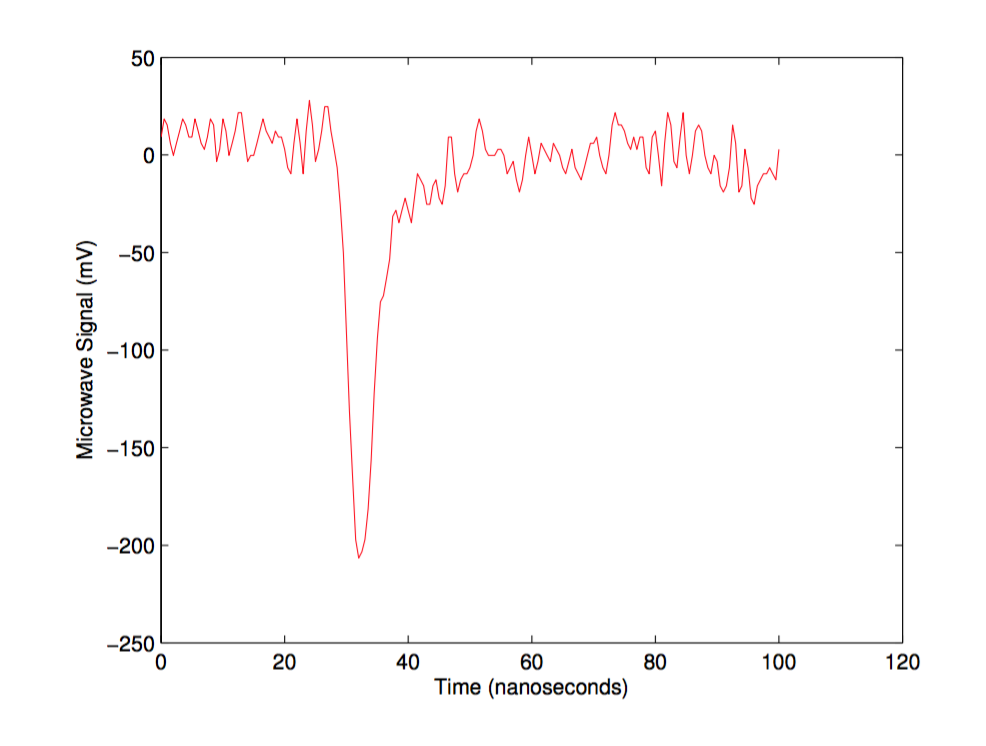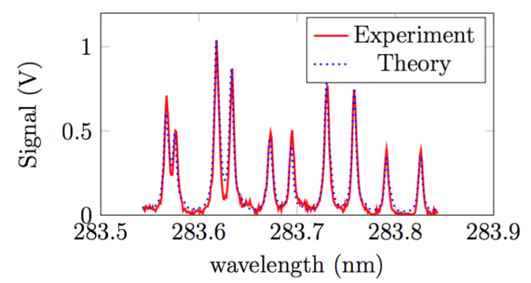- My research focuses on the development and application of optical diagnostics to plasma, combustion and hypersonic systems. Below are projects which I have worked on:
- Emission studies of high temperature radiation
|
High temperature gas/plasma radiation leads to a radiative heat flux during planetary entry of a space capsule. This radiative heat flux can be significant - or dominant - portion of the total heat flux depending upon the entry conditions. As a result, accurate calculation of high temperature gas radiation is required. Towards this end, we performed absolute intensity measurements of both CO 4th positive (Mars entry) and air (Earth entry) emission within a plasma jet produced using an atmospheric pressure plasma torch facility. The centerline temperature of the plasma jet was approximately 7000 K. A VUV emission spectroscopy system was adapted to the plasma torch facility to measure spectrally resolved emission down to 140 nm. The emission from the plasma in the VUV, UV and near IR was consistent with thermochemical equilibrium. The equilibrium nature of the plasma and the associated radiation makes it ideal for studying and validating radiative models - in this case VUV radiative models. For both CO 4th positive and air emission studies, radiative models were tested and compared against the measured emission. The figure below shows several electronic transition moment functions (ETMF) tested for the CO 4th positive system. These ETMFs were used to calculate sets of Einstein coefficients that were then used by the radiative code SPECAIR to calculate the spectrally resolved emission of the plasma for comparison with measurements. In both the CO 4th positive and air emission studies, good agreement was found between the SPECAIR calculations and our measurements.
References:
|
- Recombining plasma studies
|
Chemical kinetics of recombining plasmas are of relevance for planetary entry and energy applications (CO2 dissociation, plasma pyrolysis of methane, etc.). The plasma torch at laboratoire EM2C (CentraleSupélec) produces a high temperature (~7000 K) plasma at or close to equilibrium conditions. By passing this plasma at high speeds through a water-cooled tube, a sharp drop in temperature can be induced that initiates chemical recombination. In many situations, this forces the plasma out of chemical equilibrium as the chemical kinetics cannot follow the rapid drop in temperature. The input/initial conditions are well known because the plasma starts in thermodynamic equilibrium. As a result, this experimental configuration therefore provides an ideal test platform for validating chemical kinetic models of relevance for the applications cited above. Several studies have been conducted over the years in various mixtures: air, air/Ar, N2/Ar, and CO2/Ar. A recent thesis has begun studying the N2/CH4/Ar mixture which is of relevance for space missions to Titan. The figure below shows a schematic of the plasma torch outfitted with a recombination tube to produce the recombining plasma.
References:
|
- Infrared Spectroscopy: Carbon Monoxide production in a high temperature ablative boundary layer
|
The design of reliable and cost effective heat shield material is an important consideration for future space missions. Our work looks at quantifying ablative species introduced into a high temperature ablative boundary layer. These species, particularly Carbon Monoxide, are predicted to have a significant impact on the heat transfer to the vehicle surface. We use infrared emission and absorption spectroscopy to provide absolute concentration measurements of ground state Carbon Monoxide. These measurements are documented in our 2016 Journal of Physics D: Applied Physics article..
References:
|
|
|
The Radar REMPI concept was developed by the Applied Physics Research Group at Princeton University and applied to combustion species. Radar Resonance Enhanced Multi-Photon Ionization, or Radar REMPI, uses a laser to resonantly ionize a specific atom or molecule at a point of interest. The amount of ionization produced is related to the concentration of the resonant species. This ionization is viewed remotely using a microwave radar system, providing a measure of the ionization level and, consequently, the resonant species concentration. Such an approach is being evaluated as an alternative to techniques such as Laser Induced Fluorescence. My work used a 2+2 REMPI scheme to target molecular nitrogen. Experiments were performed at different pressures and temperatures to evaluate diagnostic performance. In addition to using the diagnostic for measurements of rotational temperature, we identified new collision-induced spectroscopic features in molecular nitrogen.
|
|
The ionization level depends on the laser wavelength. On resonance, the amount of ionization dramatically increases and is proportional to the resonant species concentration.
|
Microwave scattering (homodyne detection) is used to remotely monitor the ionization level, thereby providing a remote measure of species concentration.
|
|
Microwave scattering time traces are collected. The temporal peak in this trace is due to the time-dependent ionization induced by the laser pulse. The amplitude of the peak depends upon the level of ionization which, in turn, is proportional to the resonant species concentration. The negative signal value has to do with the phase of the microwave signal relative to a reference used to demodulate the microwave signal.
|
Rotational spectrum involving a two photon resonance between the ground electronic (X) and excited electronic (a) states. Experimental spectra were compared with theoretical spectra to provide a measure of rotational temperature.
|
|
References:
|
- Laser Ionization Tagged Radar Anemometry (LITRA)
|
The LITRA concept was developed by the Applied Physics Research Group at Princeton University. The concept uses a nanosecond laser pulse to non-resonantly ionize air and generate a laser spark at a point of interest in a supersonic airflow. This spark is visible to microwave radar and serves as a seed particle. As the spark moves in the flow, its motion is tracked using the radar system, providing an estimate of the flow velocity. Figure 1 identifies the primary components of the LITRA diagnostic. The radar system utilizes heterodyne detection, permitting the phase of the microwaves scattered from the ionization to be measured. The output power of this radar detection system is on the order of 10’s of milliwatts. Measuring the phase variation with time permits one to determine the velocity of the spark relative to the radar system. The radar system, which consists of a transmitting and receiving horn, is sensitive to the velocity component which bisects the angle (θ) defined by the transmitting horn, laser ignited plasma and receiving horn. The spark is assumed to faithfully follow the flow, just as seed particles in techniques like Particle Imaging Velocimetry (PIV) are assumed to.
|
|
Experimental configuration for implementation of the LITRA concept. A laser is used to remotely generate a laser spark at a point of interest. Microwave scattering is then used to track the motion of the spark within the flow providing a remote estimate of flow velocity.
|
The velocity component measured is that component which bisects the angle between microwave source and detector.
|
|
References:
|
